Happy Tuesday! We are pleased to share that The Dispatch softball team will remain undefeated for at least one more week! Upon arriving at the designated field for our first game of the season Monday, we were informed the location was unavailable due to preparations for the Army’s upcoming 250th birthday bash. Well, there’s always next week.
Quick Hits: Today’s Top Stories
- The Defense Department has mobilized 700 U.S. Marines to California in response to protests and riots in parts of Los Angeles, U.S. Northern Command announced Monday. The troops will begin deploying to L.A. as soon as Tuesday in response to clashes that began over the weekend following Immigration and Customs Enforcement (ICE) raids across the city. The deployed soldiers will reportedly be tasked with protecting federal buildings and employees, but will refrain from detaining rioters or performing other duties typically reserved for law enforcement.
- Meanwhile, California sued the Trump administration on Monday over President Donald Trump’s Saturday decision to mobilize 2,000 members of the state’s National Guard in response to the rioting. In a memorandum ordering the deployment, Trump said that the civil unrest in Los Angeles constituted “a form of rebellion” and prevented the U.S. government from enforcing the law, circumstances that, under federal statute, permit him to call in the National Guard. However, California Attorney General Rob Bonta argued the move was unlawful and in violation of California’s “sovereign right to control” the Guard. Bonta further contended that Trump needed the approval of California Gov. Gavin Newsom for the deployment, because the federal law Trump cited requires that the order “be issued through the governors of the States.”
- Russia unleashed its largest drone attack on Ukraine since the war’s start, Ukrainian officials said on Monday, killing one person near the western city of Rivne. According to the Ukrainian Air Force, Russia’s attack included 479 drones and 20 missiles, though Ukrainian air defenses thwarted the majority of the attack. Meanwhile, both Russia and Ukraine began exchanging prisoners of war on Monday—primarily the wounded and soldiers under the age of 25—though neither side provided precise numbers. Over the weekend, Russia accused Ukraine of stalling the prisoner swap, a claim which Ukrainian President Volodymyr Zelensky dismissed as baseless.
- NATO Secretary-General Mark Rutte called on NATO nations to invest more resources in their military defense capabilities, warning that Russian President Vladimir Putin could attack a NATO country within the next five years. Specifically, he recommended that the alliance increase its spending on air and missile defense capabilities by 400 percent. “Five percent is not some figure plucked from the air, it is grounded in hard facts,” Rutte said from the Chatham House in London. “The fact is, we need a quantum leap in our collective defense.”
- President Trump held a 40-minute phone conversation with Israeli Prime Minister Benjamin Netanyahu on Monday, later telling reporters that it went “very well,” and that they covered topics including Israeli hostages held in Gaza and ongoing U.S. talks with Iran over its nuclear program. During a press conference, Trump claimed that “Iran actually is involved” in hostage negotiations between Israel and Hamas. He also shared that Iran’s terms for a prospective deal—which he did not outline—were “just not acceptable,” and asserted that the U.S. would not allow Iran to maintain its uranium enrichment capabilities. An Iranian spokesperson said Monday that a U.S. proposal was “not acceptable,” and that the Islamic Republic will present a counteroffer to the U.S. in the coming days. The next round of talks between the two countries is reportedly scheduled for either Friday or Sunday.
- Secretary of Health and Human Services Robert F. Kennedy Jr. removed all 17 sitting members of the Advisory Committee for Immunization Practices (ACIP) on Monday, an entity within the Department of Health and Human Services that provides recommendations on vaccine safety and efficacy. A press release from the department stated Kennedy was “totally reconstituting” the committee, and that he will soon appoint replacements. Kennedy defended the move by saying it ensures “unbiased science” will guide the government’s vaccine research. All 17 members had been appointed to the position by former President Joe Biden, including 13 who were appointed in 2024.
‘ICE Go Home!’
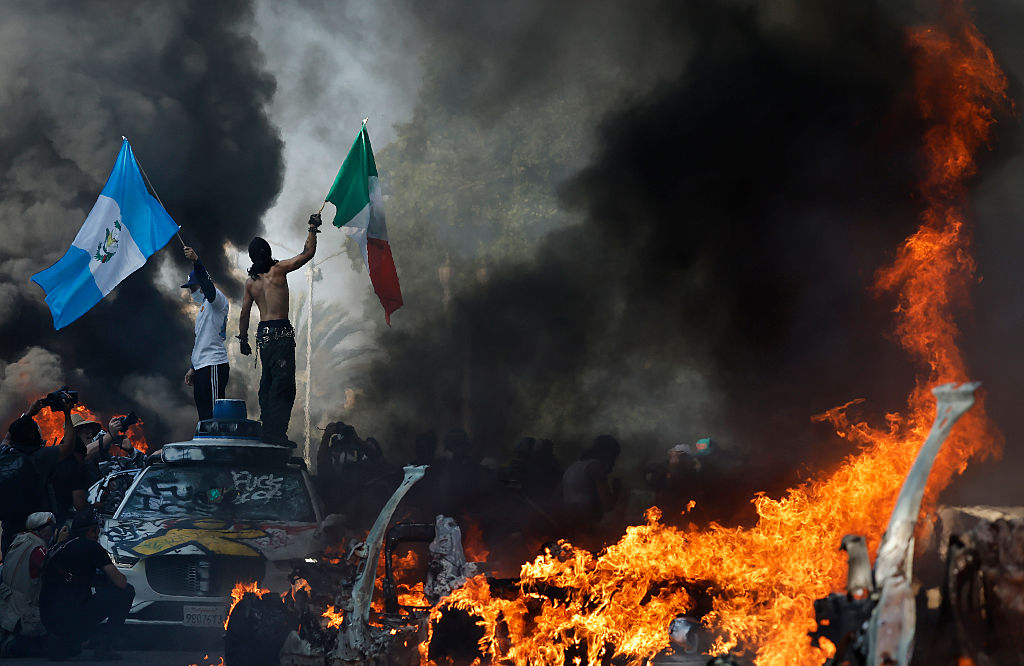
Paramount, a small city just south of Los Angeles, is typically a quiet working-class suburban community. But on Saturday, it became the site of a clash between protesters and federal law enforcement. Rioters, some of them waving Mexican flags, clashed with federal officers, who fired tear gas and flashbangs in an attempt to disperse the crowds. As L.A. law enforcement rushed to the scene to reinforce the federal forces, they were pelted with bottles and rocks as protesters chanted “ICE go home!”
A series of surprise immigration enforcement raids by federal officials around Los Angeles over the past week sparked protests, often violent, that started on Friday and continued through Monday. In response, President Donald Trump federalized and deployed National Guard troops to Los Angeles over the objections of California Gov. Gavin Newsom, a use of presidential power that hasn’t been invoked without a governor’s consent since 1965.
The protests began as masked federal agents conducted immigration enforcement raids at multiple sites across the city, including a store in Los Angeles’s heavily Hispanic fashion district, drawing a small crowd that chanted and threw eggs before being dispersed by tear gas and rubber bullets. Hundreds of protesters gathered in front of the Federal Building in downtown Los Angeles later that day to protest the arrest of a prominent union leader, Service Employees International Union California President David Huerta, who was observing a raid. Department of Homeland Security officers, reinforced by the Los Angeles Police Department, eventually dispersed the crowd. More than 100 people were arrested.
Protests persisted—and escalated—on Saturday. In Paramount, a predominantly Hispanic community in southern Los Angeles County, federal agents assembled in an office park adjacent to a Home Depot where migrants often gathered in search of work. Protesters flocked to the scene as rumors spread of an impending raid, although it appears that no such raid was planned. When agents began firing tear gas into the growing crowd, protesters began throwing projectiles at the federal police, and then bottles and rocks at L.A. sheriff’s department officers arriving to provide reinforcements. The confrontations continued throughout the day, as protesters hurled projectiles at law enforcement, set off fireworks, and started at least three fires in the area until activity tapered off around midnight.
In downtown L.A., violent protests continued on Saturday night and through Sunday outside the federal building, as police attempted to clear crowds using nonlethal weapons like flashbang grenades, rubber bullets, and tear gas. Some rioters scrawled graffiti on city buildings, set fire to Waymo taxis, and smashed store windows. When protesters spilled onto Highway 101 for a period of time on Sunday afternoon, some threw chunks of concrete at police officers sheltering beneath an overpass, prompting police to fire more flashbangs into the crowd. By Monday evening, things had calmed down somewhat. Police firing flashbangs drove from the streets in front of the Federal Building protesters waving flags and chanting “peaceful protest!”
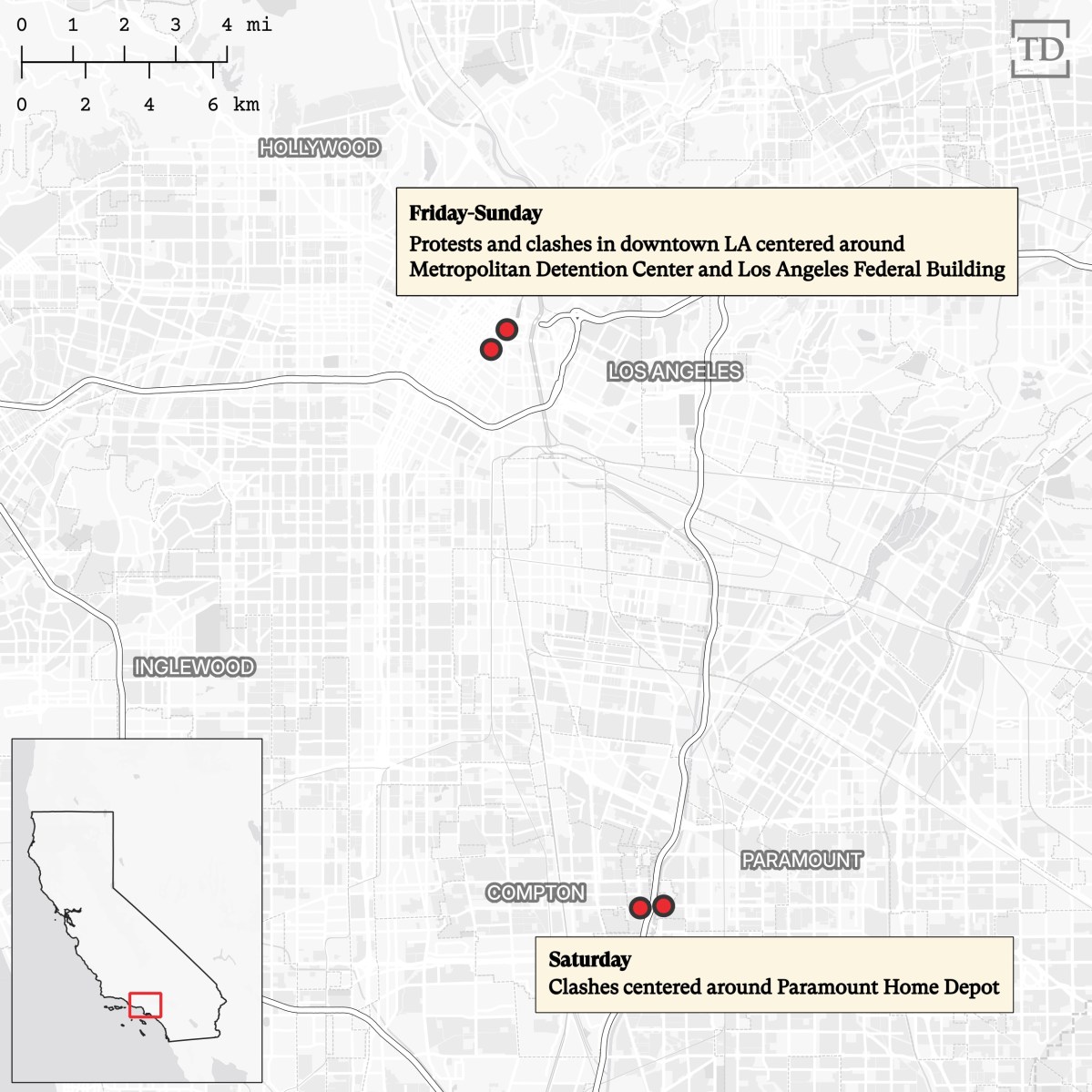
They were ugly scenes, but ones that were largely confined to a few specific locations across the city. Throughout, city officials attempted to project the sense that the situation was under control. “We’ve been in direct contact with officials in Washington, D.C., and are working closely with law enforcement to find the best path forward,” L.A. Mayor Karen Bass wrote on X Saturday. “Violence and destruction are unacceptable, and those responsible will be held accountable.”
But just a few hours later on Saturday evening, the president threatened to step in. “If Governor Gavin Newscum, of California, and Mayor Karen Bass, of Los Angeles, can’t do their jobs,” Trump wrote on Truth Social, “then the Federal Government will step in and solve the problem, RIOTS & LOOTERS, the way it should be solved!!!”
According to a presidential memorandum released Saturday night, “the way it should be solved” meant sending in the National Guard. Trump’s directive—drawing on the president’s powers to federalize state National Guard troops to combat invasion, rebellion, or the inability of regular federal forces to enforce the law—ordered 2,000 National Guardsmen to deploy to Los Angeles. But, at least in theory, their remit will be severely limited. The Posse Comitatus Act of 1878, which can be overridden only in very specific cases, broadly bars the armed forces from being used in civilian law enforcement. Instead, federal troops will be restricted to guarding federal property and protecting federal personnel.
By Sunday, hundreds of National Guardsmen had been deployed to L.A., with up to 2,000 scheduled to arrive in the coming days. About 700 Marines are also expected to temporarily deploy as soon as Tuesday, until more Guard troops arrive.
Meanwhile, California leaders have erupted in anger, denying the need for federal troops. “That move is purposefully inflammatory and will only escalate tensions,” Newsom wrote on X following Trump’s order. “We are in close coordination with the city and county, and there is currently no unmet need.” Bass also condemned the move as fueling unnecessary chaos. “There’s clearly no plan, and there’s clearly no policy,” she said at a Sunday press conference. “It’s the last thing our city needs.”
Trump’s move marked the first time a president has sent in the Guard against a governor’s wishes in more than 60 years. In 1965, President Lyndon B. Johnson ordered the Alabama National Guard to protect civil rights marchers walking from Selma to Montgomery, in defiance of Democratic Gov. George Wallace. In that incident, Johnson invoked the Insurrection Act of 1792, which authorizes federal troops to assist civilian law enforcement and overrides the Posse Comitatus Act.
Trump has not invoked the Insurrection Act, although if rioting became considerably worse, there is some precedent. In 1992, President George H.W. Bush—at the request of then-California Gov. Pete Wilson—deployed the National Guard to L.A. during the riots that followed the acquittal of police officers accused of using excessive force in the beating of a black motorist.
But the deployment is still a departure from Trump’s first term, when he declined to use the National Guard to quell rioting. In June 2020, Trump ordered the deployment of officials from both the U.S. Marshals Service and U.S. Customs and Border Patrol to Portland in an attempt to quell protests related to the death of George Floyd. But he stopped short of ordering the National Guard to participate in the effort. “We have to go by the laws,” he said in September 2020. “I can call insurrection but there’s no reason to ever do that, even in a Portland case. We can’t call in the National Guard unless we’re requested by a governor.”
By Monday, California leaders had gone from criticizing Trump’s actions to challenging their legality. In a Sunday letter to Defense Secretary Pete Hegseth, David Sapp—Newsom’s legal affairs secretary—called the administration’s order “unlawful” and formally requested that troops no longer be deployed to Los Angeles. Sapp accused the White House of violating language in the statute Trump used to federalize the National Guard, which declared that such orders would issue “through the governors of the States,” as well as language in the president’s own order that anticipated “coordination with the Governors of the States.”
Every other Democratic governor joined Newsom’s condemnation of the move on Sunday, signing onto a joint statement that called the deployment “an alarming abuse of federal power” and argued that deploying federal troops without consulting state governments would be “ineffective and dangerous.”
It’s unclear whether or not the governors’ prediction will ring true. On Monday night, an ICE raid in Orange County prompted protests outside the federal building in Santa Ana, California, where law enforcement used tear gas to disperse protesters setting off fireworks. National Guard troops have reportedly restricted themselves to guarding federal buildings rather than actively participating in crowd control. The rapid nature of their deployment, however, has potentially put a limit on how long they can stay in L.A.: Many Guardsmen are currently sleeping toe-to-toe on the floor in federal buildings in the city, and military officials have reportedly informed the federal officials that they must decide on whether to find more permanent quarters for the troops by Thursday.
While steadfastly denying that the situation in L.A. ever spiraled out of their control, California officials have attempted to cast blame on the White House, claiming that Trump sparked a disproportionate reaction by deploying troops. “The night before this action [Trump’s order] was taken, there was a protest that got a little unruly, late at night,” Bass said on Monday. “It was 100 people. Twenty-seven people were arrested. There wasn’t a reason for this.” But some local officials have hinted that federal aid may have been needed. “We are overwhelmed,” said Los Angeles Police Chief Jim McDonnell on Sunday night. “In the past couple of nights, we’ve seen violence at a level that disgusts any good person.” Newsom appeared to at least partly agree, announcing on Monday that more than 800 state law enforcement officers would be surged to L.A. in the coming days.
But by Monday evening, protests continued in parts of the city, with another car set ablaze downtown as law enforcement again used nonlethal weapons against protesters hurling projectiles. The damage from the weekend has yet to be tallied up, but at least 74 people have been arrested.
For now, the battle may have moved from the streets to the realm of politics. California Attorney General Rob Bonta said that the state would seek a court order blocking Trump’s deployment on Monday, echoing Sapp’s earlier assertion that Trump had overstepped Newsom’s executive authority as commander of the California National Guard. In response to California Democrats’ defiance, Trump appeared to endorse the idea of arresting Newsom. “I would do it if I were Tom [Homan]” he told Fox News’ Peter Doocy on Monday evening. Newsom responded: “The President of the United States just called for the arrest of a sitting Governor,” he said on X. “This is a day I hoped I would never see in America.”
Today’s Must-Read
It wasn’t a fight for equality, or the rights-based argument advanced by major LGBTQ organizations like the Human Rights Campaign, that changed hearts and minds. … Only when the progressive argument began to mirror the conservative case—framing marriage not simply as a legal entitlement, but as a social good that benefits both individuals and society—did public opinion begin to shift. The conservative case, which emphasized the moral seriousness of lifelong, monogamous commitment, succeeded precisely because it wasn’t about autonomy. It was about the longing to participate in something larger than oneself, and to be shaped by it.
Toeing the Company Line
The Totalitarian Tendency and the Confessional
A new law in Washington state intrudes into the territory of the sacred.
Trump’s Reality Show Drama Is Back for a Second Season
After the recent spat with Musk, the vice president defends his boss’ temperament.
Liberal Justices, Conservative Outcomes
‘The law knows no heresy and is committed to the support of no dogma.’
Can Anyone Save the Democrats?
‘Joe Biden on a bad day is better than Trump on a good day.’
Trust No One
On the battle of Los Angeles.
Worth Your Time
- Should we be concerned about the abundance of low-priced goods from China and other foreign nations available to U.S. consumers? In National Review, Marian Tupy and Donald Boudreaux allayed growing concerns about predatory pricing. “Competition drives innovation, improves quality, and most importantly, lowers prices for consumers. Yet when foreign companies—particularly Chinese firms—successfully compete on price, accusations of ‘predatory pricing’ or ‘dumping’ often follow,” the pair observed. “Yet for all the alarm about predatory pricing, examples of its success remain surprisingly scarce. … When Chinese solar panels were sold at prices below those of American manufacturers, consumers and climate advocates benefited from accelerated adoption of renewable energy. Rather than predation, price differences often reflect real comparative advantages like lower labor costs, economies of scale, specialized manufacturing expertise, and sometimes—it’s true—government industrial policies. Not every low price represents predation, and not every government subsidy creates lasting market distortion. Sometimes foreign producers simply make products more efficiently, or accept lower profit margins to build market share—precisely the competitive behaviors that drive economic progress.”
- Writing in Project Syndicate, Michele Zanini and Gary Hamel explored what makes federal bureaucratic reform effective. “DOGE won’t solve the United States’ structural problems, such as runaway entitlement costs, crumbling infrastructure, substandard schools, an eroding middle class, and sluggish productivity growth. Addressing these challenges will require a federal government that is not just smaller, but smarter: entrepreneurial, agile, and accountable,” they wrote. “Much of the blame lies with outdated, industrial-era management systems that prioritize compliance over performance, rules over reason, and analysis over action. Inevitably, these practices have produced bloated bureaucracies. … US government agencies now have one manager or administrator for every 1.3 non-supervisory employees–down from a ratio of one to 2.2 in 1998. The ratio in the private sector is one to five. As decision-making authority shifts away from scientists, engineers, and frontline operators toward managers, analysts, and accountants, those trying to get real work done are increasingly stymied by risk-averse supervisors and a culture of buck-passing. The problem, therefore, is not that the government employs too many people—it’s that it employs too many overseers and not enough doers.”
Presented Without Comment
ABC News: Trump Says If Protesters Spit at National Guardsmen ‘They Will Be Hit’
Also Presented Without Comment
CBS News: Waymo Suspends Car Service in Downtown Los Angeles After 5 Vehicles Set Ablaze During ICE Protests
In the Zeitgeist
The rivalry between the New York Yankees and Boston Red Sox has endured for more than 100 years, and for some players, it’s personal. Ahead of his first time pitching at Yankee Stadium on Sunday, Red Sox rookie Hunter Dobbins told the Boston Herald, “If the Yankees were the last team to give me a contract, I’d retire.”
Yankees slugger Aaron Judge later admitted he was keeping Dobbins’ comment in mind when he first came up to bat against him, and did this:
Let Us Know
Do you think Trump’s decision to deploy the National Guard was an appropriate response to the clashes in Los Angeles?


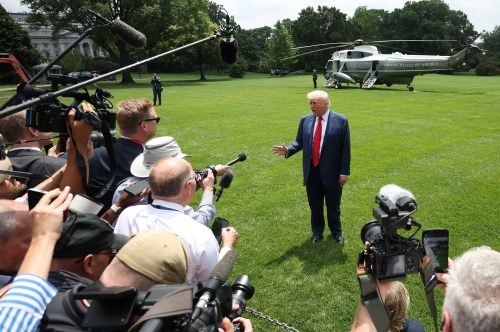
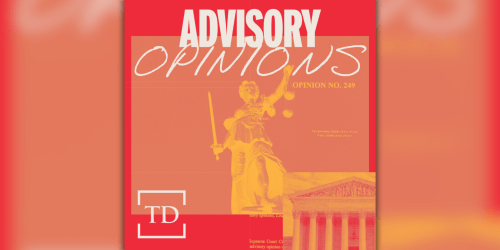
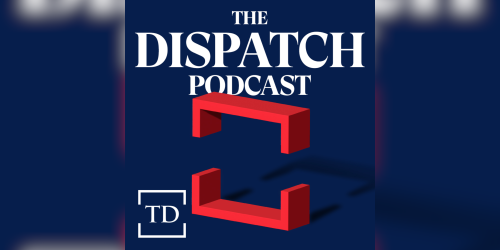
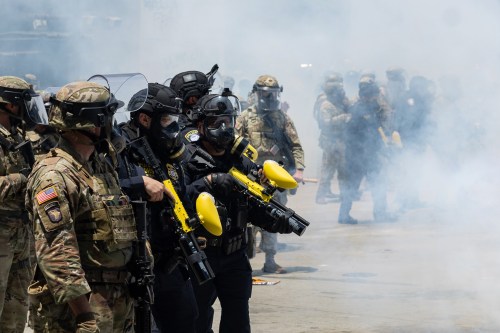



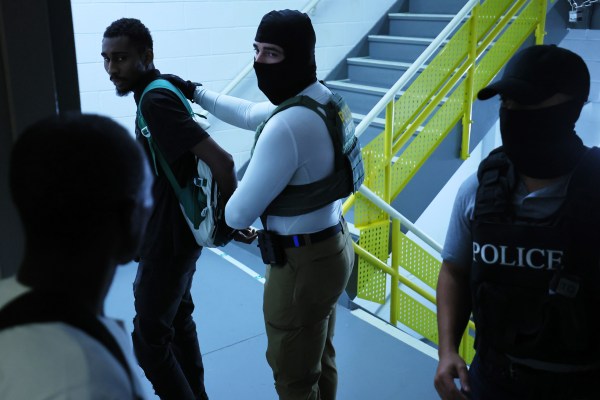
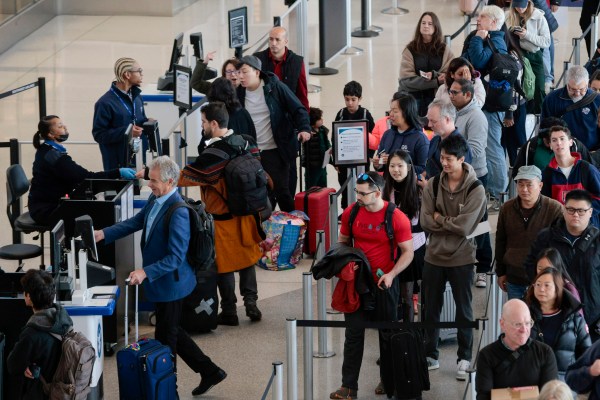
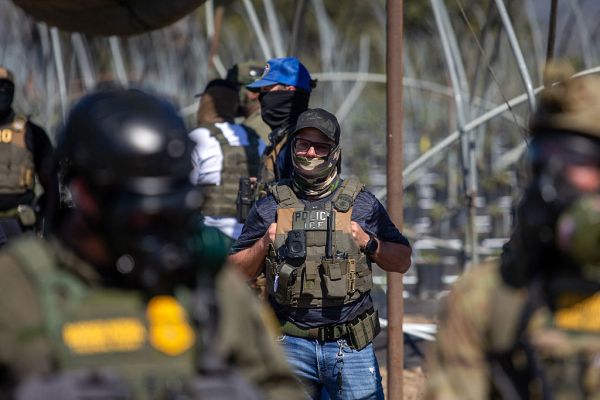
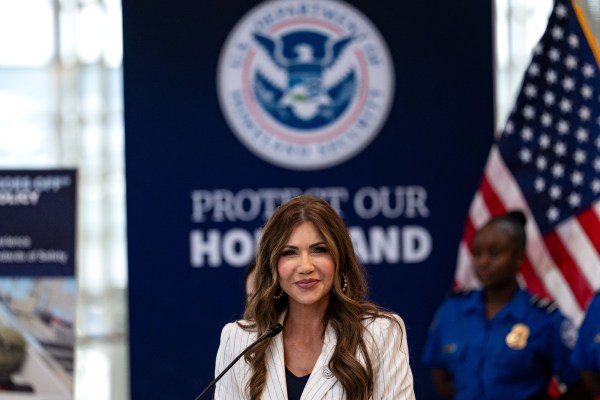
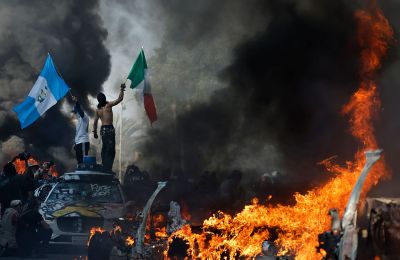
Please note that we at The Dispatch hold ourselves, our work, and our commenters to a higher standard than other places on the internet. We welcome comments that foster genuine debate or discussion—including comments critical of us or our work—but responses that include ad hominem attacks on fellow Dispatch members or are intended to stoke fear and anger may be moderated.
With your membership, you only have the ability to comment on The Morning Dispatch articles. Consider upgrading to join the conversation everywhere.